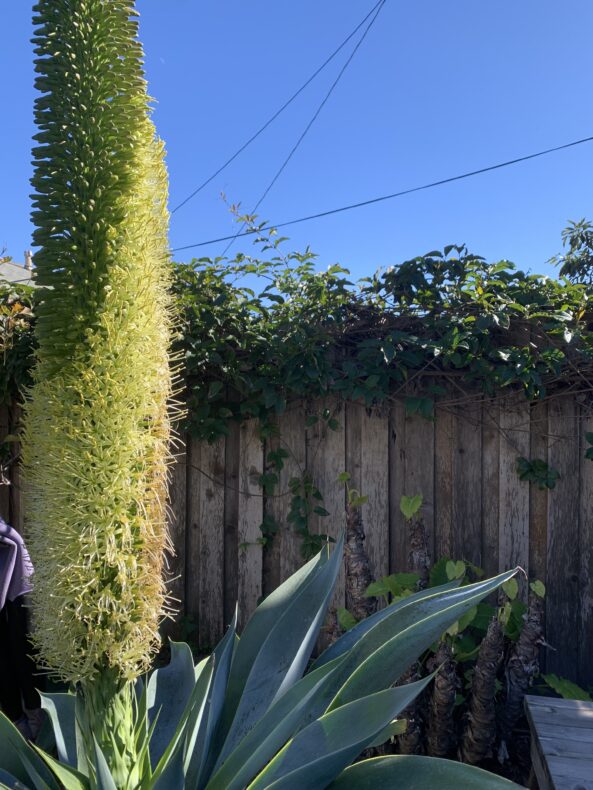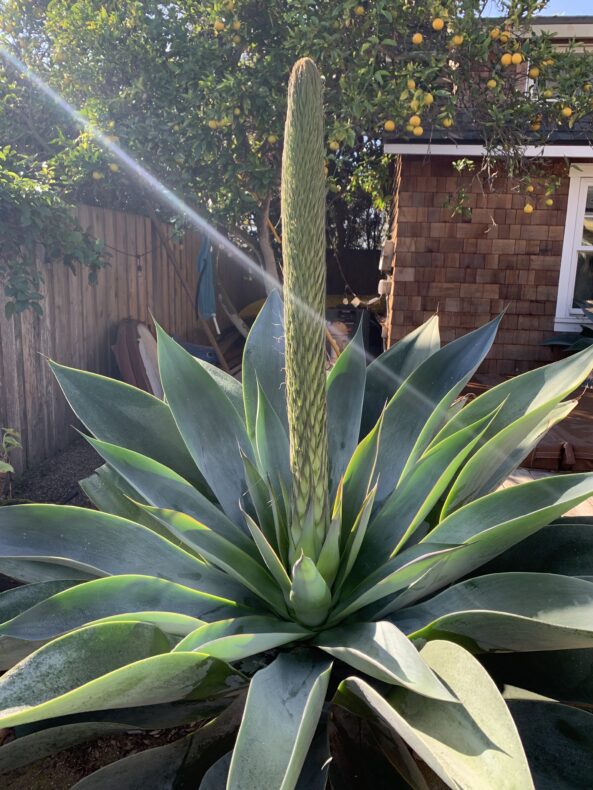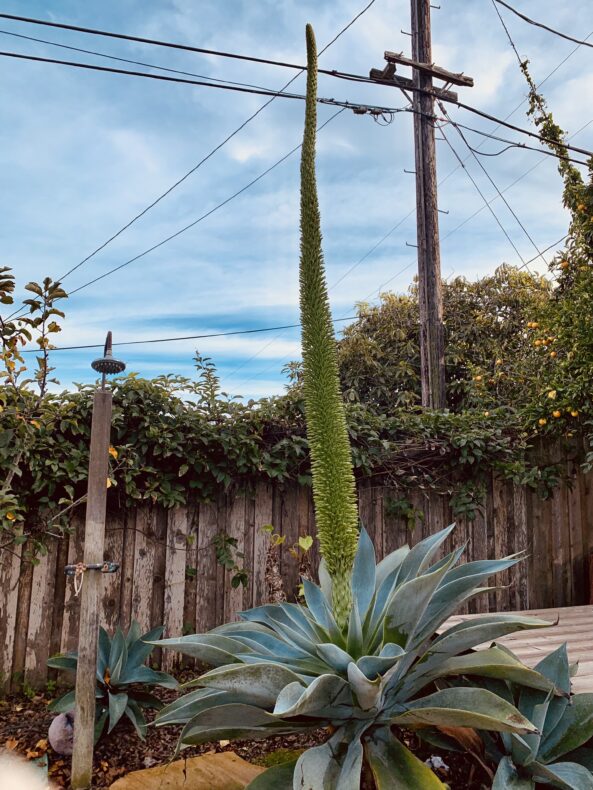
It is still January, but the plants here don’t seem to know it. The evergreen pear trees along my street burst into flurries of cloud-colored blossoms last weekend. Along my neighbor’s garage, the hedgehog aloe shows off its orange flowers. Elsewhere, there are fingerprints of the recent storms’ destruction: beaches scoured of sand, roads crumbling like pie crust, water-logged homes and sealed-off harbors. But along this strip of road, everything the rain brought seems soft and spring-like.
This goes, too, for the giant spike of agave flower that has risen up in my backyard. I wish I was sure of the species—I plant with enthusiasm and then forget what it was that I put in the ground. My best guess in this case is Agave attenuata, also called foxtail agave. Usually, the spike droops over, sways gently like its namesake in the wind.
This one shows no sign of bending. The flowers are starting to open and spiral up the plant. Bees weave in and out in the midday sun.

But this false spring can be spiky, too. The flowers mean that the end is coming. A blooming agave pours its energy into reproduction, and then the plant dies.
In a poetry class I took this week the topic was impermanence. We talked about impermanence, sure, but we also talked about the things of the world that we couldn’t help being attached to: stones and family heirlooms and trees and the ones we love.

I am attached to the impermanence of a January after the rain. I am attached to the bees and the sunshine and the blossoms. I am attached to the roads that are now broken, the sand that has been washed away, the land and life as it was before the storm. I am attached also to the reservoir, which soared from 36 percent of capacity to full and spilling over the course of three days. I am attached to the agave and its tall spike of flowers, to its blue-green flames of leaves. And when the flowers begin to bend, as gracefully as a fox’s tail, I’ll become attached to that, too, even though the agave is already letting go.
Loved this! Thqanks so much.